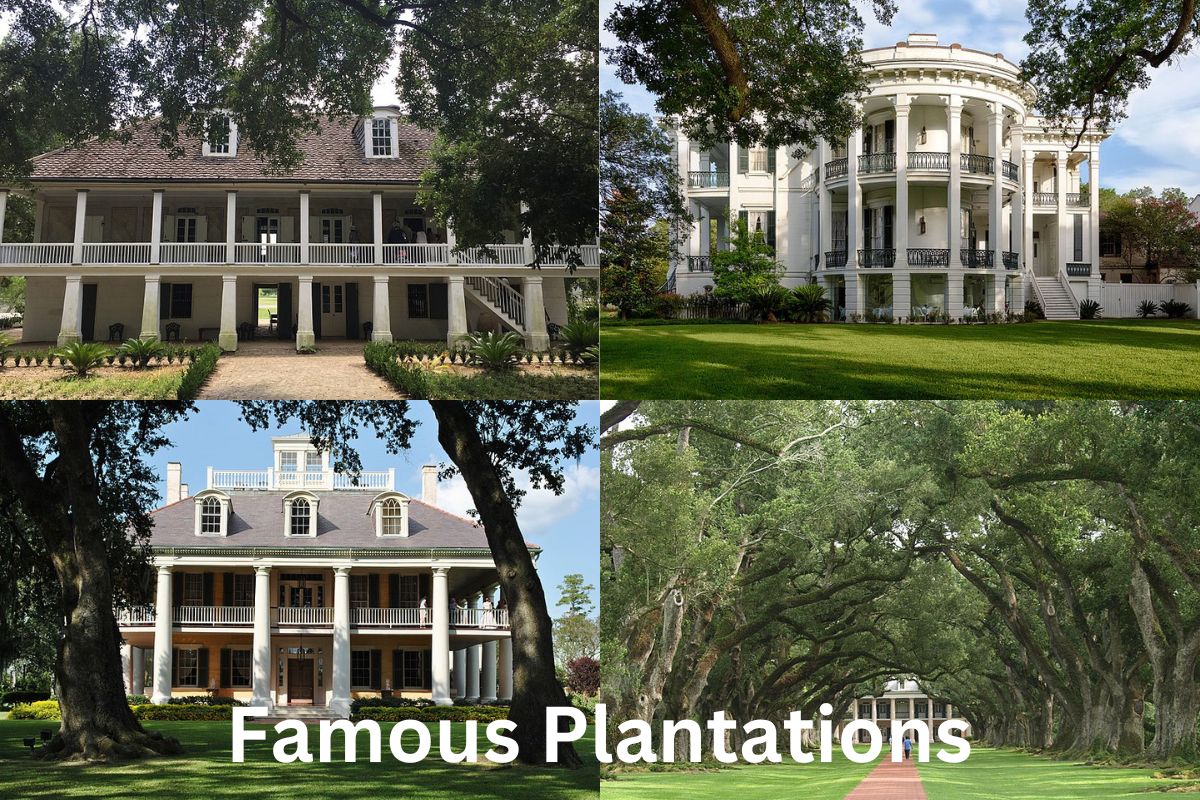A plantation is a farm that primarily grows one type of cash crop, with potentially some supplementary fields for food crops and other uses. It is typically centered around a plantation house.
Cotton, coffee, tea, chocolate, sugar cane, sisal, oil seeds, oil palms, fruits, rubber trees, and forest trees are only few of the crops cultivated here. When deciding where to establish a plantation, protectionist regulations and natural comparative advantage have both played a role.
While the term “estate” is now often reserved for extremely large properties, before 1800 in the southern regions of British North America, it was the common name for a farm of any size.
Almost all of the British colonies utilized it, but the United Kingdom itself rarely did. There, like in the United States, it was most commonly used for tree plantations, which are areas where trees have been artificially planted, either exclusively for commercial forestry or partially for ornamental impact in gardens and parks, where it might also cover plantings of garden shrubs.
The spread of European colonialism paved the way for a rise in global trade and the establishment of a global economy, both of which boosted plantation agriculture.
Famous Plantations
1. Whitney Plantation
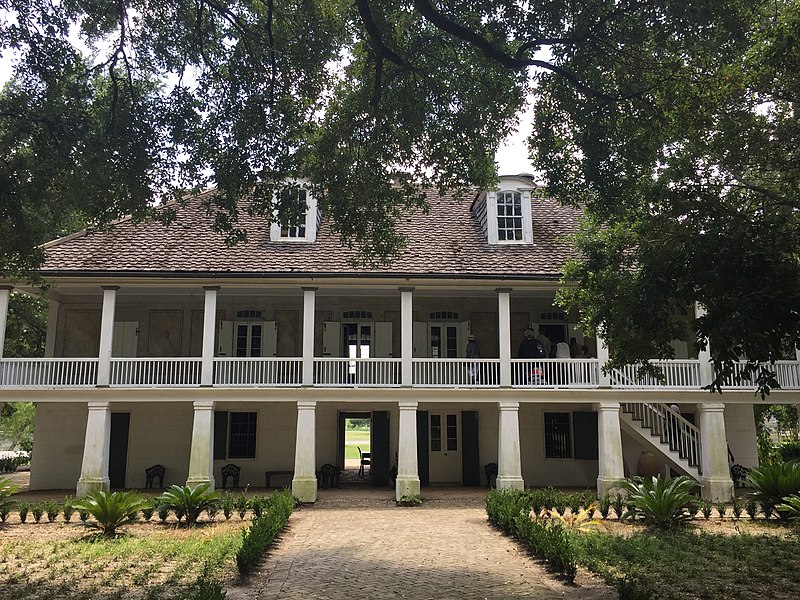
The Whitney Institute is a non-profit organization whose goal is to educate the public about the legacy of slavery in the Southern United States through the preservation of the Whitney Plantation Historic District.
Near Wallace, in St. John the Baptist Parish, Louisiana, on River Road along the Mississippi River, the entire district, including the main home and outbuildings, has been conserved.
Ambroise Haydel, a German settler who came to the river parishes in the 1750s, established Habitation Haydel. His offspring kept the property until 1860. Businessman Bradish Johnson bought the property in 1867 and renamed it Whitney after purchasing it from the original owners.
The plantation had an area of about 1,800 acres. It opened to the public in December of 2014 and currently occupies 200 acres. (The former owners dispersed the remaining land in the 1970s.)
John Cummings, a trial lawyer from New Orleans, founded the museum and has poured over $8 million of his own money and nearly 15 years of his life on it.
Also Read: Antebellum Period Timeline
Over a hundred thousand people, including women and children, were enslaved in Louisiana, and their stories are commemorated at many memorial monuments on the grounds. Cummings also commissioned original artwork to help depict the story of slavery, such as life-size sculptures of children.
A large number of adults who had been born into slavery before to the Civil War were interviewed as part of the Federal Writers Project by artists in the 1930s.
The federal government produced a collection of hundreds of oral histories from the last slaves in the United States to ensure that their stories would be preserved for future generations.
2. Oak Alley Plantation

Located in Vacherie, St. James Parish, Louisiana (USA), Oak Alley Estate is a historic plantation on the west bank of the Mississippi River.
Oak Alley gets its name from the alley (French allée) or canopied path formed by a double row of southern live oak trees stretching roughly 800 feet (240 meters) and originally planted in the early 18th century, long before the current house was constructed.
Between the house and the river is a tree-lined avenue. The building and grounds, as well as the agricultural breakthrough of grafting pecan trees, contributed to the property’s recognition as a National Historic Landmark.
When French Creole Valcour Aime bought the land in Oak Alley in 1830, he dubbed it the Bon Séjour plantation and planted sugarcane there.
Aime was one of the South’s wealthiest men and was given the title “King of Sugar” for his success in the sugar industry. It was acquired by Valcour Aime from his brother-in-law Jacques Télesphore Roman in 1836 in exchange for a plantation owned by Roman.
The present-day mansion was constructed by Jacques Roman’s slaves the following year, under the direction of George Swainy. In 1839, the palatial home finally found its finishing touches. Joseph Pilié, Roman’s father-in-law, was an architect and likely oversaw the construction of the home.
During the winter of 1846, Antoine, a slave and the gardener of Oak Alley Plantation, finally succeeded in creating a species of pecan that could be broken with one’s bare hands; the shell was so thin it was given the nickname “paper shell” pecan.
After winning an award at the 1876 Centennial Exposition in Philadelphia, where it was given the moniker “Centennial Variety,” the name stuck.
3. Laura Plantation

This site, formerly known as Duparc Plantation, is notable for the raised great house built in the Créole style during the early 19th century and for the various outbuildings, including two slave cottages, that have survived to this day. Only 15 other plantation complexes in Louisiana have as many intact buildings.
The plantation is included on the National Register of Historic Places because of its historical significance. St. James Parish is a part of the Louisiana African American Heritage Trail, which passes by this place.
The Louisiana Creole Br’er Rabbit stories were reportedly gathered in the 1870s by Alcée Fortier, who would go on to become a professor of Romance languages and folklore at Tulane University.
4. St. Joseph Plantation
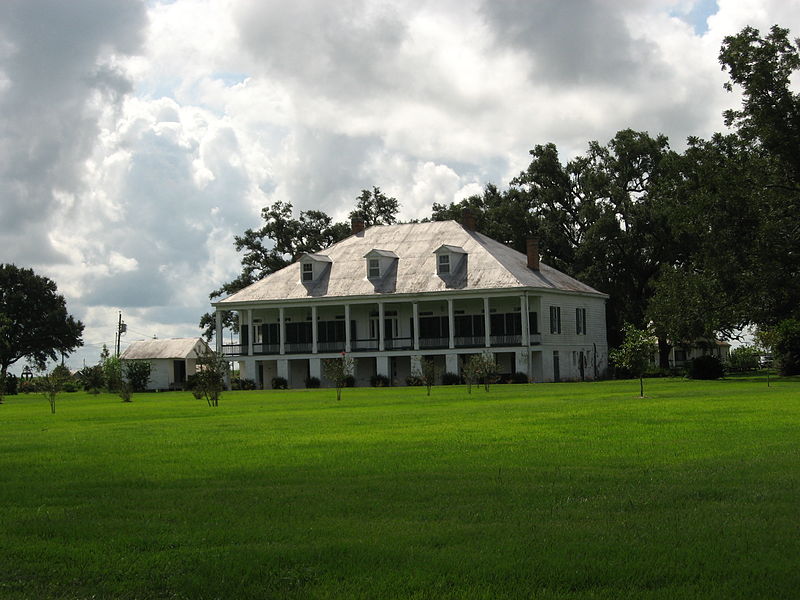
Vacherie, St. James Parish, Louisiana, United States of America, is home to the historic St. Joseph Plantation on the western bank of the Mississippi River. The United States National Park Service has included it on the National Register of Historic Places.
Located upriver from Laura Plantation and next to Oak Alley Plantation, St. Joseph Plantation may be found at 3535 Hwy 18 in Vacherie, Louisiana 70090.
In 1830, Josephine Aime Ferry purchased the plantation, and in 1877, the Ferry family sold it to Joseph Waguespack (1802-1892), whose son, Aubert Florian, later purchased Laura Plantation.
Saturnine Waguespack combined St. Joseph Plantation and Felicity Plantation in 1890 to create what is now known as the St. Joseph Plantation and Manufacturing Company. Today, it is cared for by Simon and Waguespack offspring.
5. Destrehan Plantation

An antebellum estate, Destrehan Plantation was built in the French Colonial style with certain aspects of Greek Revival architecture incorporated into its design. It is close to the town of the same name in southeast Louisiana, which also has the name Destrehan.
The plantation was first a significant producer of indigo throughout the 19th century and then of sugarcane after that. Most people link the house with its second owner, Jean-Noel Destréhan, who in 1812 became the first Senator from Louisiana to serve in the United States. He only held this position for a short time. He was a significant figure in the movement that led to the statehood of the Orleans Territory.
The house is a one-of-a-kind example of a plantation home that survived the construction of an oil refinery all the way up to the present day. It is recognized as having significant architectural value and is connected to significant historical figures and events in Louisiana’s past, which led to its inclusion on the National Register of Historic Places.
6. Magnolia Plantation and Gardens
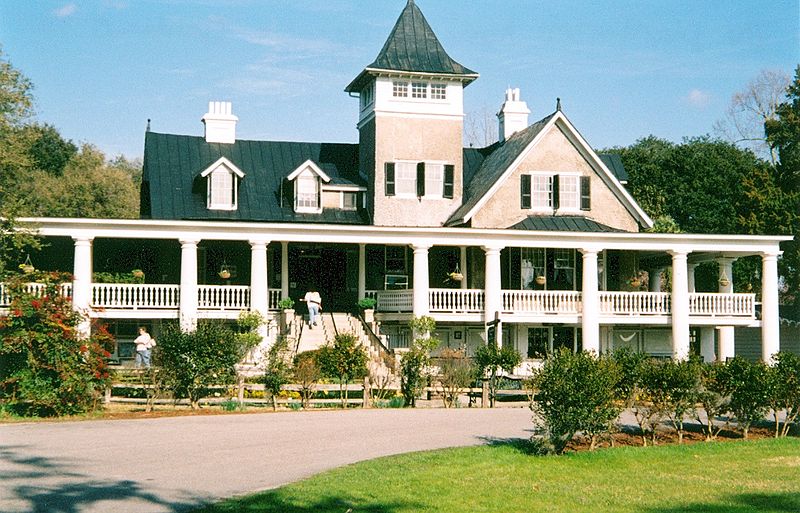
Located west of Ashley in Charleston County, South Carolina, at 3550 Ashley River Road, is the historic house and grounds of Magnolia Plantation, which spans 464 acres and overlooks the Ashley River.
It’s one of the South’s oldest plantations, and it’s on the National Register of Historic Places. Near Charleston, across the Ashley River from North Charleston, is where you’ll find Magnolia Plantation. The house and gardens are open daily; an admission fee is charged.
Thomas and Ann Drayton (formerly Anna Fox) established the plantation in 1676 with the construction of a home and a modest formal garden. (The plantation remains under the control of the Drayton family after 15 generations.
The Draytons imported some of the slaves who were used to maintain the property from Barbados in the 1670s. On the adjacent property, the historic Drayton Hall was constructed in 1738 by enslaved workers for John Drayton, grandfather of judge John Drayton II.
In order to irrigate the area for rice farming, the original inhabitants of Magnolia constructed enormous earthworks in the form of dams and dikes in fields along the river. Black slaves from rice-growing regions in Africa made the art.
This group of slaves eventually created a creolized language and colorful culture called Gullah, which drew heavily on West African traditions.
There is a corridor in the Carolinas and Georgia known as the Gullah Heritage Corridor where people have preserved numerous West African traditional aspects.
7. Middleton Place
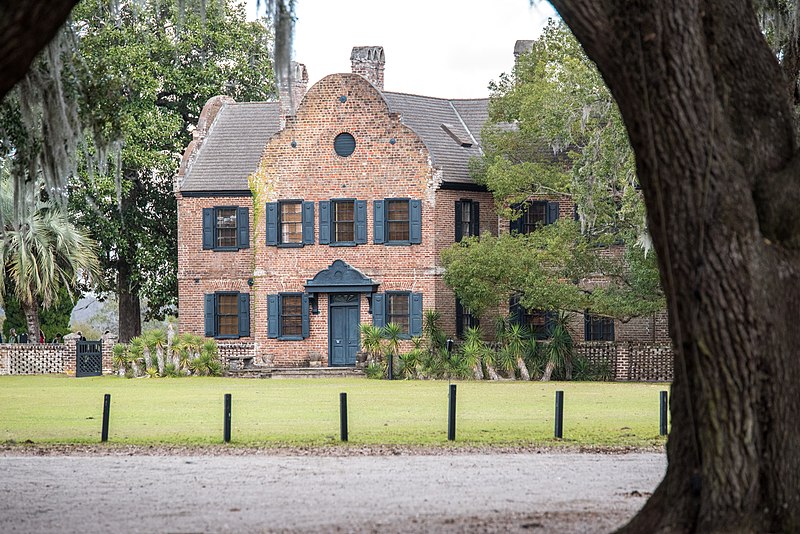
Dorchester County, South Carolina is home to the plantation of Middleton Place, which is located on the western bank of the Ashley River, around 24 kilometers (15 miles) from Charleston.
The plantation was constructed in multiple stages between the 18th and 19th centuries, and it served as the primary residence for several generations of the Middleton family, who played important roles in the colonial and antebellum history of South Carolina. The oldest planted gardens in the United States can be found on this property, which is now a museum and part of a National Historic Landmark District.
Middleton Place was likely started in the late 1730s by John Williams, an early planter in South Carolina. Henry Middleton (1717-1784), who later became President of the First Continental Congress, was his son-in-law and finished the main section of the house as well as the north and south flankers and started construction on the lavish gardens.
It was at Middleton Place that Middleton’s son, Founding Father Arthur Middleton (1742-1787), a signer of the Declaration of Independence, was born and spent his final years.
Henry Middleton (1770-1846) and Williams Middleton (1809-1883), Arthur Middleton’s son and grandson, respectively, oversaw the transformation of Middleton Place from a rural estate to a bustling rice plantation.
Union soldiers burned down the majority of the home in 1865, near the end of the American Civil War, leaving only the south wing and the destroyed walls of the north wing and main house. Both the main house and the north wing were severely damaged in the devastating 1886 Charleston earthquake.
The gardens of Middleton Place were methodically rebuilt over the course of several decades beginning in 1916 by Middleton descendant John Julius Pringle Smith (1887-1969) and his wife Heningham.
8. The Hermitage
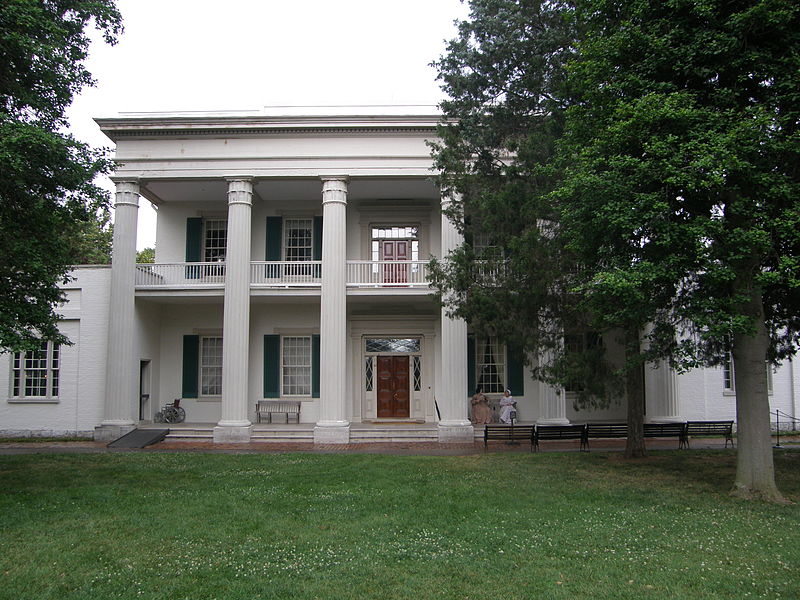
Approximately 16 kilometers (10 miles) outside downtown Nashville in Davidson County, Tennessee, sits the historical museum known as The Hermitage.
Andrew Jackson, the 7th President of the United States, controlled the 1,000-acre property from 1804 until his death in 1845. It’s also where he’ll be laid to rest. Until his retirement from public life in 1837, Jackson maintained sporadic residence at the house.
There were nine enslaved people living at the Hermitage when it was purchased in 1804, and 110 by the time of Jackson’s death. Most of these people were engaged in growing cotton, the plantation’s primary cash crop. It’s so important that the government has designated it a landmark.
Andre Jackson III and his family were the last to live in the Hermitage, which was built by Andrew Jackson Sr. Following the departure of the last occupant in 1893, the house was no longer used as a family home.
After being given the property by the state of Tennessee, the Ladies’ Hermitage Association opened the Hermitage to the public as a museum dedicated to the history of Andrew Jackson and the antebellum South. The mansion is now exactly as it looked in 1837 thanks to the Association’s efforts.
Over time, the group purchased all of the previously sold land, finally reclaiming the final piece of land in 2003.
9. The Houmas
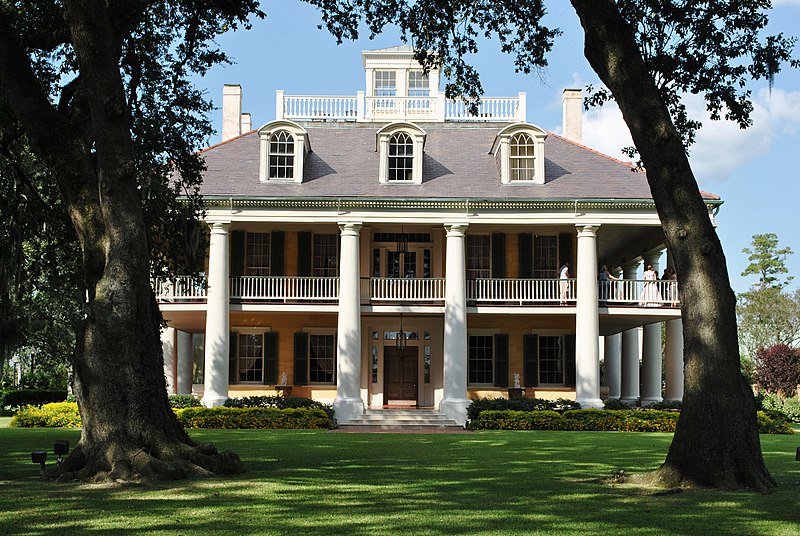
Located in Burnside, Louisiana lies the historic plantation complex known as The Houmas, which was formerly known as Burnside Plantation and is now known as Houmas House Plantation and Gardens.
In the late 1700s, the plantation was formed, and in 1840, the construction of the present-day main house was finished. It was given this name in honor of the Houma people, the indigenous inhabitants of this part of Louisiana, who came up with the name.
The nine structures and one main structure that make up the complex, along with the ten acres of land that they are situated on, were entered into the National Register of Historic Places on September 27, 1980.
It was once one of the largest plantations in America covering some 12,000 acres and had one of the greatest slave holding in Louisiana before to the American Civil War, with over 750 slaves on it.
10. Nottoway Plantation
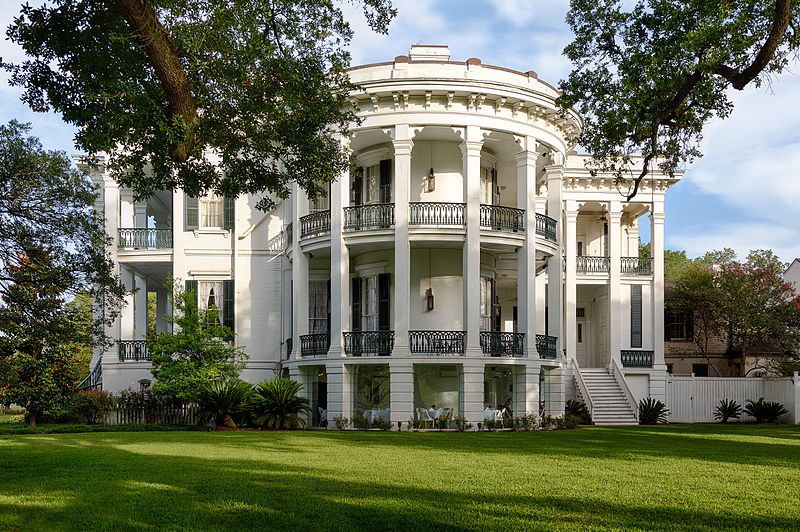
You may find Nottoway Plantation, also known as Nottoway Plantation House, in the outskirts of White Castle in Louisiana.
The plantation home is the biggest surviving antebellum plantation house in the South, boasting 53,000 square feet of space and designed in the Greek Revival and Italianate styles for John Hampden Randolph in 1859.
The property features a modest formal hedge garden next to the garçonnière (the separate kitchen) and a fountain courtyard in front of the southern bedroom wing. The house is located about 200 feet from the river levee.
There are contemporary outbuildings like offices and function spaces surrounding the main home. While the estate was closed to the public in 2008 for renovations following Hurricane Gustav, the owners added a carriage house, ballroom, and nine Acadian-style cottages inspired by the old slave quarters.
The family’s bones were moved to the Randolph cemetery in 2003, and the renovated stables to the north of the home now serve as a ballroom.
